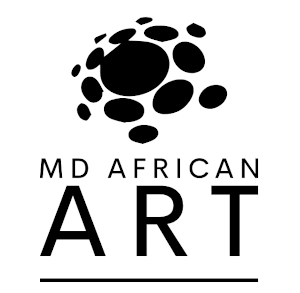In the wake of geopolitical shifts and evolving foreign policies, Russia has emerged as a dynamic hub for the appreciation of African art. The recent growth in interest mirrors the African art boom witnessed in Europe and the US, yet it also reflects the Kremlin’s evolving stance on cultural exchange and international cooperation.
The catalyst for this burgeoning fascination can be traced back to significant cultural events such as Reversed Safari, Russia’s inaugural major exhibition of African art, which unfolded last summer in St. Petersburg’s Manege Central Exhibition Hall. This landmark event showcased over 300 works by 49 African and 14 Russian artists, capturing the essence of Africa’s rich artistic heritage. Concurrently, the State Russian Museum, under the stewardship of Alla Manilova, a prominent Putin loyalist, presented "Africa in Russian Art," further emphasizing the synergy between African and Russian artistic traditions.
These exhibitions were not just showcases of artistic prowess but also symbols of diplomatic engagement, coinciding with the second Russia-Africa summit held in St. Petersburg. The summit, convened in July, reaffirmed commitments to foster cooperation in various spheres, including culture, education, and tourism. Such initiatives underscored Russia’s desire to deepen ties with the African continent amidst growing geopolitical complexities, including the country’s isolation from Europe due to the Ukrainian war.
The timing of these cultural exchanges amidst geopolitical turbulence is not coincidental; it signifies a strategic pivot in Russia’s foreign policy narrative. By embracing African art and culture, Russia seeks to forge new avenues of connection and collaboration, diversifying its international partnerships beyond traditional spheres of influence. This strategic approach aligns with Putin’s vision of expanding Russia’s global footprint and asserting its cultural relevance on the world stage.
Furthermore, the surge of interest in African art in Russia reflects a broader trend of cultural renaissance and exploration. As geopolitical landscapes shift, individuals and institutions alike are seeking new sources of inspiration and connection. African art, with its vibrant colors, intricate motifs, and rich cultural symbolism, offers a compelling narrative that resonates deeply with audiences across borders.
From traditional sculptures and masks to contemporary paintings and installations, African artists offer a kaleidoscope of perspectives and experiences that captivate the imagination. Russian art enthusiasts, eager to explore diverse artistic traditions and narratives, are drawn to the authenticity and vitality of African art.
In conclusion, the recent growth in interest in African art in Russia signifies more than just a passing trend; it represents a transformative cultural exchange with far-reaching implications. As Russia navigates geopolitical challenges and seeks to redefine its global role, the embrace of African art emerges as a symbol of openness, dialogue, and collaboration. By engaging with Africa’s artistic heritage, Russia not only enriches its cultural landscape but also fosters mutual understanding and cooperation in an increasingly interconnected world. Yet if hostilities between Russia and the Western world cool in coming years, some caution this renewed interest could easily wane.

